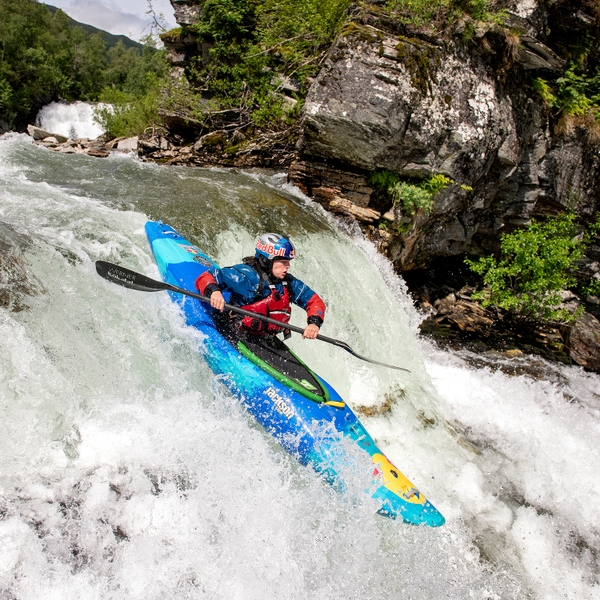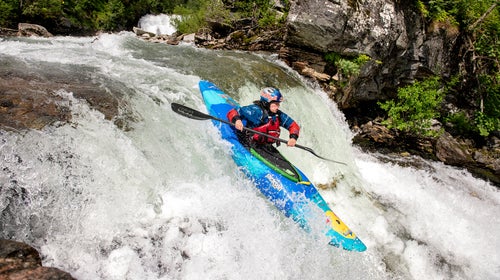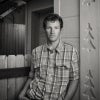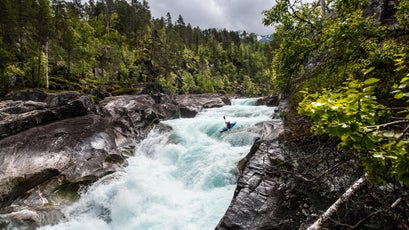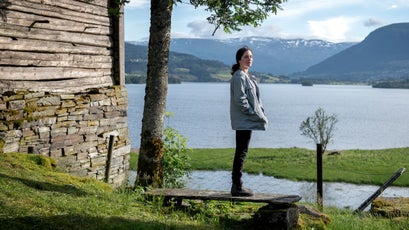World’s Best Kayaker Seeks Full-Time Employment
With a résumé full of wins at kayaking's most prestigious competitions and historic first descents of the planet's deadliest whitewater, Nouria Newman is considered one of the greatest paddlers around. So why can't she turn her passion into a sustainable career?
New perk: Easily find new routes and hidden gems, upcoming running events, and more near you. Your weekly Local Running Newsletter has everything you need to lace up! .
The night before Nouria Newman nearly drowned in India, in August 2018, she used her paddle to sweep animal dung out of an abandoned stone hut. The then 25-year-old French kayaker was alone at 13,467 feet in the Himalayas. “It’s gonna be the bedroom,” she announced, whisking the space with a mix of mild altitude sickness and bliss. That day she had put on the Tsarap River and kayaked mostly flatwater through mountains too high for trees to grow. Day two would bring elevated flows and mellow rapids—Class III, she’d been told.
“It’s beautiful. It’s beautiful. I’m so happy,” Newman said the next morning, announcing her state of mind into her GoPro as she paddled through a canyon whose walls were layered like stacked pancakes. Shortly after, she heard the unexpected roar of difficult whitewater ahead.
Paddling alone is as rare in kayaking as free-soloing is in climbing. It’s also gaining attention. Last year, in a descent many kayakers compared to Alex Honnold’s historic ropeless climb of Yosemite’s El Capitan, Spanish paddler Aniol Serrasolses during the highest flows any kayaker had ever seen on the river. Before arriving in India, Newman was one of the world’s most accomplished paddlers, but she had never soloed anything significant. For her first attempt, she picked a 233-mile section of the Tsarap, Zanskar, and Indus—three connected rivers that help form what some call the Grand Canyon of Asia—because she’d heard it was well within her abilities, and because she wanted time to think.
Over the previous two years, Newman had graduated from a top school in France with a master’s degree in journalism, been let go from a job in that field, and been cut by the French national slalom team. Though she’d won an individual silver medal at the 2013 World Championships and team gold in 2014, team officials had tired of her pursuit of a career in whitewater, outside the narrow confines of slalom racing.
Throughout the two decades Newman had kayaked, she’d paddled in 46 countries and, in 2014, became one of only ten people , a formidable rapid on the Stikine that most boaters elect to portage around. She had run 80-foot waterfalls and claimed wins or top-ten finishes in nearly every noteworthy extreme whitewater competition in the world. “For the first time ever, the world’s best kayaker is a woman,” professional expedition paddler Ben Stookesberry, one of the sport’s elder statesmen, said.
Despite growing accolades, getting fired from the French team in December 2017 had left Newman feeling adrift. At the time, she was living in her mom’s apartment in the South of France and owned little more than she could pack into her perpetually damp gear bags. On a whim, she bought a ticket to India to compete in an event at the , on India’s southwest coast. She won the race, then began plotting her next move. When the police prevented her from paddling flooded rivers in India’s southeast, Newman flew north to attempt the Grand Canyon of Asia alone.
From the seat of her kayak that second morning on the Tsarap, the rapid she was approaching didn’t look like a mellow Class III. The river narrowed and slipped into a gorge, where Newman could see the tops of boulders. The rapid roared like big water, but it was too late to get out and scout. When she hit a wave forming upstream of a boulder, it broke and, like a reset typewriter, pushed Newman to the left. The view opened up. Just beneath her bow was a cauldron that sucked down through a funnel between two massive rocks. This was a siphon, where water can pull a paddler below the surface. Siphons kill kayakers.
Newman paddled hard to the right to cross back into the main current, but it wasn’t enough. Her boat met rock, and she became wedged between the boulder and the force of the current, directly above the siphon’s mouth. For four minutes she stayed there, still upright, but with the river surging over her shoulders. Finally, she pulled her spray skirt and flung her drybag, with all the supplies she’d need to survive, onto the rock island beside her. She then leaned forward to clip a tether to her kayak’s bow, hoping it would enable her to climb onto the island, pull the boat up behind her, and scout the remainder of the rapid.
She never made it out of the kayak. When she shifted her weight, the river poured into the open cockpit, and Newman, still in her boat, flushed into the siphon. Underwater she had time enough to think, You fucking idiot. Fortunately, there were no obstacles to trap her, and she was quickly flushed downstream. After another quarter-mile of big water, six minutes after she first got pinned, Newman reached the shore. By the time she’d returned upstream for her drybag and reran the rapid, 45 minutes had elapsed. On the riverbank, she broke into sobs. Then she switched on her GoPro, snapped her skirt onto her boat, and slid back into the current. “I’m cold. I’m scared,” she said between shaky breaths. “And it’s time to keep going.”
“Sorry I’m late,” Newman says. It’s the end of June, and one hour after our scheduled meetup. Newman, having lost track of time while running a classic Class V gorge on the slate-gray Raundalselva River outside Voss, Norway, is slogging up the trail at the take-out. She’s in a blue drysuit carrying her blue Jackson kayak over her shoulder. A dozen or so feral-looking paddlers—nearly all shirtless dudes—are basking and snacking in the sun. Newman drops her boat by the VW van she’s been living in for the past two weeks and says, “At least we didn’t have to go to the emergency room today.” They’d seen two accidents in the past two days: a friend following Newman’s lead paddled an inflatable unicorn off a 35-foot drop and nearly broke his coccyx, and another boater Newman was paddling with landed on her head at the bottom of a two-tiered, 60-foot waterfall and thought she’d dislocated her shoulder. “There were cameras there,” Newman says. “You should never step up your paddling because there are cameras there.”
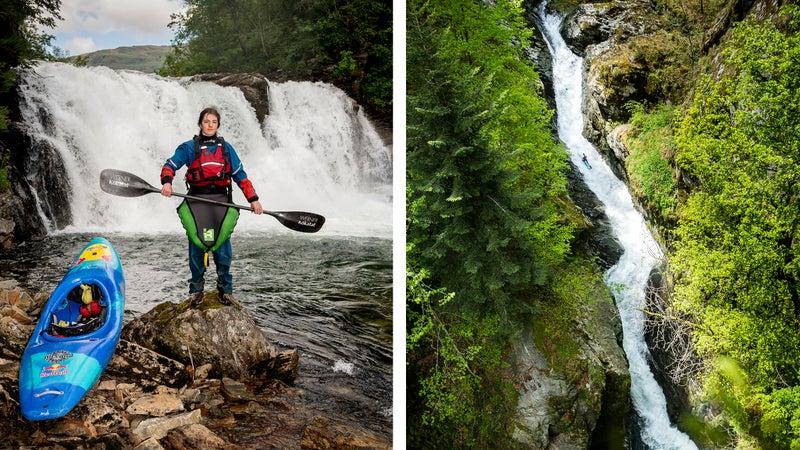
Newman has come to Voss with , a 32-year-old French-Irish filmmaker who, like Newman, retired from a successful slalom career to pursue extreme kayaking. They’re shooting a video series for Red Bull to highlight the world’s top paddlers: Newman, Serrasolses, Dane Jackson, and Ben Marr. The fjords surrounding Voss offer rivers and creeks with an absurdly high density of waterfalls and the type of unforgiving whitewater you’d expect to see in a Red Bull flick. The town’s other draw is the , a gathering and competition that attracts top athletes in climbing and kayaking, as well as BASE jumping, cliff diving, and other fringe sports. Between shoots of her running enormous rapids, Newman hopes to claim her throne in the downriver race at the European Championship, a whitewater event that will take place three days from now on a nearby river.
Kayaking includes a variety of disciplines, and Newman is the rare athlete who excels at nearly all of them. She got her start in slalom racing, an Olympic event. In fiberglass boats that are as long, thin, and fragile as they are fast, paddlers race both upstream and down through a series of gates hung above the rapids. Freestyle competitions are held on standing waves or holes. In stubby plastic or carbon-fiber boats analogous to surfing’s shortboards, competitors utilize surges in the river to coax their kayaks into complex aerial maneuvers. Then there are extreme whitewater events like the one here in Voss. Boaters race heavy kayaks roughly the shape of bratwursts down waterfalls, boulder gardens, or high-volume rapids. Newman is the clear favorite.
After changing outside Heurteau’s van, Newman peels the lid off a can of tuna and slurps the liquid off the top. She’d recently told me she was “trying to get out of the dirtbag cycle this year,” but clearly she hasn’t achieved her goal. Not that anybody really makes a stable living from kayaking these days. Two decades ago, when companies like Subaru and Nike fueled the sport’s short-lived boom, top kayakers could make six figures. But by the mid-2000s, the industry had contracted and the money dried up. Now it’s ruled by a handful of small but hearty brands that kick down gear and whatever cash they can afford, usually not more than a few thousand dollars, to the dedicated athletes who rep their products.
Barring independent wealth, the only reliable way to paddle full-time is to attract a mainstream sponsor. For Newman, that’s Red Bull. Since 2013, she’s been sponsored by the energy-drink company, which now pays her around $13,000 a year. She makes another $8,600 or so from industry sponsors—Jackson, Kokotat, Sweet Protection—and scrapes together a bit more income from guiding and the occasional speaking gig. (In July, she delivered a motivational talk on risk to outdoor retailers in Munich for about $330. “Really good money!” she called it.) Despite the tight budget, Newman manages to paddle more days out of the year—upwards of 250—than almost anyone else in the sport. In 2018 alone, she kayaked in 16 countries. In the two months leading up to our meeting in Norway, Newman ran rivers in France, Slovenia, Austria, Germany, Italy, and Iran. During that last stop, at the behest of the International Canoe Federation. It’s an enviable travel schedule, but lately, scrimping by has made Newman wonder how long she can keep it up.
That’s one reason that, instead of Norway, Newman would prefer to be in the United States right now, competing in the in Colorado and then the in Idaho—two of the sport’s biggest races. With wins there, thanks to prize money and performance bonuses in her Red Bull contract, she would nearly double her annual income. She was the heavy favorite at both events, until the State Department rejected her visa request. The official rationale was that Newman didn’t have enough money in her bank account to prove she could support herself. True enough. But Newman suspects the real reason was that , and a recent stamp from the Islamic Republic of Iran looked suspicious. Newman spent a good portion of what she usually makes in a year to hire a lawyer to reapply for a visa. Near the end of the process, she wrote to friends and associates in the States asking them to support her application.
“I feel incredibly lucky to get to do what I love most and what I do best,” she wrote. “But it turns out Mr. Immigration Officer is right about something. Whitewater kayaking isn’t a proper job.”
Newman grew up an only child in , a small village near a ski resort in the French Alps. Her father, an English expatriate, worked in tourism. Her mother, who was born in Paris, held various jobs, which included renting skis and packaging chocolate. In a small town full of skiers and hunters, Newman was an outsider. “The other kids would bring marmot pelts to school,” Newman remembers. “I wanted a marmot pelt to bring to show-and-tell.” She brought a venomous asp shoved into a bottle of liquor instead.
Every summer, the Newman family traveled abroad, visiting Costa Rica, Thailand, or Cuba for extended periods, usually with no fixed itinerary. The one time she joined an organized tour, with her grandfather, Newman grew bored, like they’d forfeited adventure. “I still struggle with structure and authority,” she says. She recalls skidding her bike through a neighbor’s freshly graveled driveway for the sheer thrill of defying them.
Video by Red Bull Media House
Newman started paddling around age four, not long after seeing a plastic kayak for the first time. “I thought it was a huge Playmobil toy,” she says. “The coolest, biggest plastic toy.” When she asked her parents if she could try kayaking, they said yes, but not until she’d learned to swim. So Newman took swimming lessons. In the U.S., most paddlers are taught to kayak by family or peers. In France, the pathway is more formalized. Paddlers pay to join a local slalom club that gives them access to gear, coaching, and a competitive circuit.
Newman won her first race when she was eight. At ten, when the World Championships were held on her local course, she made necklaces with little kayaks on them. She and a friend sold several hundred to spectators, earning Newman enough to buy a playboat to use when she wasn’t slalom training. She also skied, mountain-biked, and climbed, but the river meant something more. “Taking away kayaking was the only thing that worked when my parents threatened me with discipline,” she says.
In 2006, at age 14, Newman entered the French Championships, competing against adults. The event was held 30 minutes from home, in nearby Bourg-Saint-Maurice, on a glacial river—steep, frigid, and intemperate—with a course that Heurteau calls the world’s hardest. Newman took fifth in the women’s division.
When she was 18, Newman earned one of three spots on France’s senior slalom team. She had just moved south to start her master’s degree in journalism at , an esteemed school near one of the team’s training centers. A few years later, Newman remembers her coach telling her, “You’re fast. If you pull down a good run, you can be a world champ.” Newman had never considered that possibility, though she was already a disciplined athlete. She structured entire practices around fundamentals, spending hours and hours on forward strokes alone. On weekends or rest days, she’d trade her carbon race boat for a plastic freestyle or downriver kayak and chase whitewater for fun. She guesses she paddled 20 percent more than her teammates. The effort paid off. In 2013, she won silver at the World Championships in Prague. The win felt good, but slalom wasn’t enough to sate Newman’s fierce appetite for paddling.
Few slalom boaters can run whitewater at Newman’s level. The athletes who prioritize the raw speed and performance required for slalom don’t typically have the stomach for the danger, unpredictability, and adventure of whitewater. But while pursuing Class V rapids away from racing, Newman started to build a community of fellow big-water diehards. The year before she moved to Toulouse, Newman met Louise Jull, a Kiwi slalom racer who also excelled in whitewater. They soon formed the core of a loosely knit, all-women international kayaking crew that would grow to seven members. Newman, Jull, and the others competed against one another in slalom or extreme races, then logged notable descents in places like Norway and Chile. Newman was thrilled to have the camaraderie. “Lou was easy,” she says. “Like I wouldn’t see her for months, and then we’d pick up exactly where we’d left off.”
Still, Newman was struggling with her dual pursuits. “How do you match the hemispheres of slalom and kayaking? How do you fit all that in while trying to go to school?” she says. While training for the slalom World Championships in Maryland in 2014, Newman awoke early one day for a practice session. She found a sign hanging outside the entrance to the now dry concrete riverbed: The river is closed.
In a gesture of defiance against the rigidity of competition life, she impulsively bought a ticket to British Columbia. A day later, Newman showed up on the banks of the Stikine, where she became the first woman to kayak Site Zed. Feats such as these made her a minor celebrity in kayaking, and for a while she seemed to be thriving despite her divergent passions. She and her team claimed gold at the World Championships a couple of weeks later. Nonetheless, the French Canoe and Kayak Federation, which manages the national team, saw something in Newman they didn’t like. Her focus was drifting.
More than any other factor, what drove Newman to trade her slalom career for the endless pursuit of whitewater was a string of devastating tragedies, starting in the fall of 2014, that forced her to recalibrate her priorities. That November, Newman was recovering from surgery on her left rotator cuff when she had a bad reaction to a routine dose of morphine, leaving her unconscious for three days. When she awoke, she learned that a friend of hers, Peruvian paddler , had died in a kayaking accident.
Six more of Newman’s friends would die within the next 12 months, including Jull. In the spring of 2015, Jull was training in New Zealand when . The grab loop on her spray skirt caught on a log and she drowned.
When she received the news about Jull, Newman was still regaining her strength from surgery and reeling from grief. She says she considered quitting kayaking altogether, mourning the fact that she’d missed out on so much time with friends and family. Eventually, she visited a psychologist, who she remembers telling her to let go of her regrets and focus on the things she could change. Newman realized that she was no longer compelled by the singular pursuit of competition. “It changed my life drastically, because I always thought that getting medals was something really important,” she says. “But then I got a medal and it didn’t change a thing.” Around that time, when she found an old note Jull had written her, she was struck by one particular line—“Always remember the most important thing: fun.” She had it tattooed on her forearm (though she left out the word fun, keeping the most important thing to herself).
In May of 2015, Newman made a trip to the U.S. to paddle and to compete in extreme kayaking races. Still recovering from surgery, she won the women’s competition at the GoPro Mountain Games in Vail, Colorado, and finished an astonishing eighth overall (including men and women) in the North Fork Championship. Those were significant performances that came with financial perks, but even better were the opportunities they presented to travel. She linked up with some American extreme kayakers and maximized her three-month visa camping and paddling the West’s best whitewater.
Newman views those experiences, along with her time in therapy, as “the beginning of the end” of her slalom career. Rather than “doing loops on artificial courses like a goldfish,” she thought maybe she should pursue whitewater full-time. In 2016, Newman graduated with her master’s degree, and the following year the French Kayaking Federation made the decision for her.
“They fired me,” Newman says. The elite training program dictates that if an athlete fails to produce results, they can be cut from the team, and after her surgery, Newman’s results had been inconsistent. But it was more than that. “You quit slalom three years ago,” Olympic silver medalist Vávra Hradilek told her. Newman knew he was right; her real passion had become whitewater. Still, the dismissal left her feeling like she’d failed at the thing she’d dedicated her life to. So she responded the way she always had in hard times: she went kayaking, this time alone, on a river high in India’s Himalayas.
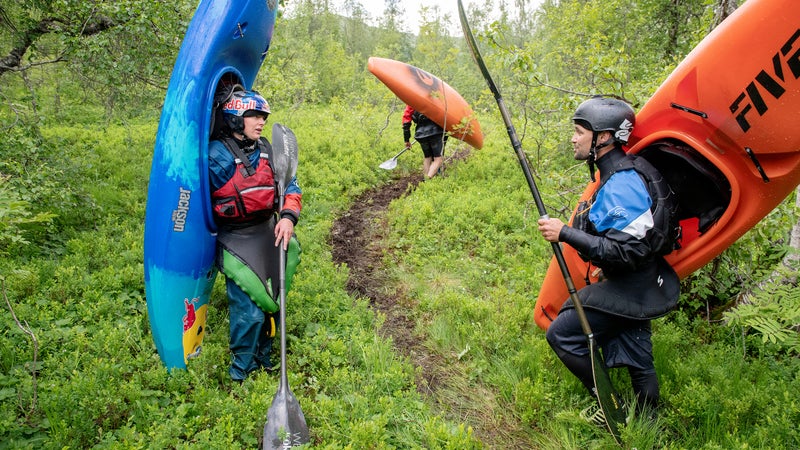
After the near drowning in India, Newman had more than 200 miles of whitewater to paddle. She slowed down. She scouted rapids. A few times, fear and disorientation turned to tears. What the hell am I doing here? In the end, after seven days, Newman had paddled some 20 Class IV and V rapids, a breed of whitewater that’s like riding a fire hose through a minefield.
“It was like one of those tribal rituals where a child becomes an adult,” Heurteau says. “When she came off the river, something had triggered in her. She’d decided on a new path, and that path was to push harder than ever.”
Newman’s most ambitious goal now is to team up with Ben Stookesberry to complete China’s Tsangpo, a Himalayan river that some paddlers have called the sport’s equivalent of Mount Everest. In 2002, Scott Lindgren and a team of seven whitewater legends made a historic descent down the Tsangpo, though some controversy lingers over their accomplishment, because the team left the lower section of the river unrun. Newman and Stookesberry hope to one day make a complete descent. Money is as much an obstacle as the river itself. Including permits and transportation, the expedition will cost somewhere in the range of seven figures. Stookesberry thinks that if any kayaker can raise that sort of money in the sport, it’s Newman. The reasons, he says, have as much to do with her skills as a communicator as with her gifts as a paddler.
Three days before the European Championship in Norway, Newman and Heurteau are collecting more footage for their Red Bull film. Newman is standing at the edge of an ice-blue creek outside Voss that’s rushing over the lip of Nosebreaker, . The current makes an S-shaped turn, bouncing left, then right, then left again, before falling some three stories into the pool below. If you approach on the outside of the S, your boat will be shoved into the right wall: broken nose. If you’re too far inside, the river will shove you left and send you flat into an eddy, with similar results.
Having considered Nosebreaker for a few minutes, Newman appears unfazed. She describes it as “straightforward.” As Heurteau’s drone hums over the drop, Newman lowers herself into her kayak, splashes her face, and enters the rapid just left of a small V-shaped wave that marks the start of the first half-circle in the S turn. When she hits the main curler about 15 feet downstream, she leans hard into it, and the water shoves her much farther right than she’d anticipated—nearly against the wall. Newman disappears over the lip and lands with an empty boof.
Newman walks back to the top of the drop to run it again. This time she makes a subtle change. She enters the rapid at the same place but angles her boat a few degrees left, then leans into the first lateral with less force. The current carries her into the strongest flow in the center of the river. After a full stroke that lifts her bow, Newman arcs out beyond the waterfall and lands in the pool below with a series of silky skips. Her hair would still be dry if she hadn’t missed her first line.
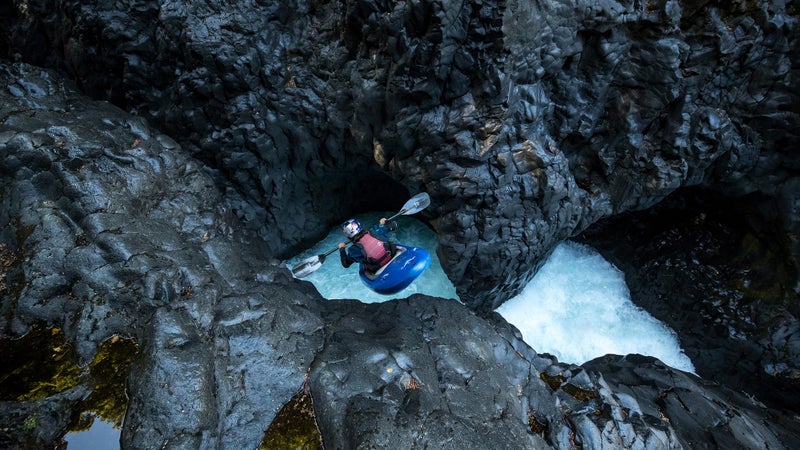
What strikes me is how quickly she makes decisions. Heurteau compares a kayaker’s ability to read a river to a musician interpreting sheet music; the art comes down to how one executes within the understood structure. “Nouria has great water awareness,” he says. “It’s not that she’s going to stick her line every time, but she knows exactly what she will do if she doesn’t.”
Perhaps because of her journalism background, Newman has the uncommon ability to translate some of this knowledge for a general audience. In Tibet in early August, she diagrammed an entire half-mile rapid in her journal and posted it on Instagram. She broke the big-water Class V into some 25 steps and annotated the lines: “Keep left on the crushing wave,” “Stay balanced, aware of where you are,” “Boof for Jesus.” Though hard to read (Newman writes in chicken scratch), these dissections help dispel the persistent myth that kayaking is an extreme sport ruled by knuckleheaded adrenaline seekers who don’t think before they huck. There’s real planning behind her dangerous feats. “I’m not a stuntwoman,” she says. “I wouldn’t run these things unless I was sure I’d be OK.”
Newman has more than , a healthy number for a kayaker, though not extraordinary. (, another Red Bull paddler, has 139,000.) But Newman’s feed offers something distinct from the bro-brah image of risk-taking promulgated by most pro kayakers, who typically post huck shots from photogenic drops like or famed rivers like the Stikine and not much else. By contrast, Newman, who now posts nearly every day (because “the data demands it”), features a mix of lifestyle shots, envy-inducing travel images, a few photos of terrifying rapids, and portraits of friends. Each photo includes a short but well-considered caption. “Nouria is the latest addition to a long line of exceptional female kayakers,” says Mariann Saether, a professional paddler from Norway. What separates her from the rest, she says, is social media.
Within the small community of elite paddlers, Newman comes across as one of the adults in the room—sometimes the acerbic one. Stookesberry says her honesty isn’t universally popular among kayakers. In 2018, she wrote an op-ed in Kayak Session magazine that gently clowned Rush Sturges, one of the sport’s biggest names, over his conversion to veganism. “We shouldn’t be too judgmental towards one another. We are all in between swims, vegan or not,” she wrote. Her point was that all choices are justifiable but self-righteousness never is. One night while we were walking back from a party in Voss, Newman was incredulous about a top paddler’s recent career change to life coach. “He meant extortionist,” she laughed.
Still, it’s hard to imagine an athlete with a similar collection of talents struggling to make a career in almost any other sport. No wonder, then, that Newman is irritated that she hasn’t been able to turn her passion into a sustainable career. “Why do I get half as much as the boys when I paddle expeditions and win races?” Newman asks. “I have to be a fucking asshole to advocate for myself.”
Saether, who is in her late thirties and has been sponsored for twenty years, agrees that Newman deserves to earn more, but she doesn’t think gender bias is the issue. There’s just not much money to go around, she says. Newman doesn’t disagree, but she thinks women have to fight harder for their slice of a shrinking pie. She once threatened to walk away from a deal with Sweet Protection helmets if they didn’t compensate her. (They now give her about $1,665 a year.) She says that Jackson Kayaks pays some of its male athletes more than her. When I reached out to then president Eric Jackson, he conceded that a few top men make more than Newman but said she’s paid the average for their male paddlers. “We would love to do more, but we have been making cuts at JK. Nouria’s compensation isn’t a male/female thing. Her team manager, Emily [Jackson, Eric’s daughter], wouldn’t tolerate it.”
It’s not just sponsors that Newman has to battle. In June, a few weeks before the European Championship, Newman was planning to enter race. At the time, the competition had two events, a marathon course and a sprint final, but there was no women’s division in the sprint and therefore half the available prize money. The reason for the disparity, according to the race directors, was that in prior years no women had elected to compete in the more challenging sprint event—but they weren’t barred from entering it.
Newman showed up to the King and Queen of the Alps planning to compete in both marathon and sprint, but when she received her official registration form, it stated that only the top 20 male finishers in the marathon would be allowed to compete in the sprint final. She discussed her concerns with the directors, who proposed a solution: they would ask the other women if they wanted the chance to race in the final, and if none did, Nouria could compete with the men. In the end, three other women wanted to compete, and the company sponsoring the event ponied up 300 more euros in prize money for a women’s category—the same amount as the men. Newman won the race.
“I wish girls had more ego to stand up and show the world how good they actually are,” Newman says. “Kayaking is a reflection of society.”
A few days after I watched Newman run Nosebreaker, we’re sitting in the living room of a small apartment she’s sharing with six other kayakers who are here for the races in Voss. It’s around 10 P.M. the night before the European Championship, and Newman’s phone buzzes. It’s a text from a transgender woman she recently kayaked with: Can Newman help her lobby the race directors to let her compete in the women’s division at future events? For twenty minutes, Newman struggles with what to do. At the root of the trouble, she explains, is the question of what gender means—why it even matters. In the end, she decides to ignore the text, concluding that she doesn’t know enough about the topic to be an advocate. “I really feel for her,” she says. “But at the same time, I’ve competed enough to know that if you want to be accepted, if you want to be a part of something, maybe competition is not what will make you feel better.”
It’s now the final heat of the European Championship, and Newman is waiting in a pool beneath a 20-foot waterfall on Norway’s Myrkdalselvi River. She already has a several-second lead over the four women she’s competing against. Prepping for her second run, Newman pantomimes each move on the course like a downhill skier outside the starting gate. A left stroke off the right side of drop one. Down the V forming just left of the rock island. Vertical strokes through the flats. And center-left off the second drop, a 20-foot waterfall.
There are about 100 kayakers and spectators positioned on the banks of the Myrkdalselvi. Techno music pumps from a speaker, and when competitors near a bridge doubling as a viewing platform, the crowd roars and shifts from the upstream side to the downstream side.
It’s not just sponsors that Newman has to battle. In June, she was planning to enter Italy’s King and Queen of the Alps race. At the time, the competition had two events, a marathon course and a sprint final, but there was no women’s division in the sprint and therefore half the available prize money.
As extreme racecourses go, this isn’t an impressive one. The river level is so low that racers scrape bottom at one part of the run. But if it isn’t particularly dangerous, racing the Myrkdalselvi today is technical. Along the half-mile course, the river drops over six distinct ledges that vary in size from a three-foot, river-wide hole to a twenty-foot waterfall that shoots kayakers into the pool below like they’ve been fired from a T-shirt gun.
The emcee announces that Newman has taken the course. “We don’t even have to watch to know who wins this. She’s too fast,” says a young, shirtless spectator with dreadlocks and bare feet. Newman’s first lap, not her best, would have qualified her for the men’s final. But when her boat skips into view after the first drop, something’s off. She’s too far right to catch the fast water flowing on the left side. From then on, the mistakes pile up. She gets stuck on a rock in the flat stretch and is too far left when she launches from the 20-foot drop, causing her to land in slack water and lose time pulling herself out of an eddy. “Huh,” the guy with dreads says. “Things are getting interesting.” At the finish line, Newman collapses in exhaustion.
Despite what she called her ugliest race ever, she finished less than a second behind the eventual winner.
Newman is gracious in defeat. “And the one that showed anything can happen today, Beth Morgan!” says the emcee as they take the podium. Newman showers Morgan with champagne, but afterward she sounds devastated. “I can’t believe it, I fucked up,” she says. “I started thinking about what went wrong, trying to compensate. I think it’s time to take a step back and relax.”
And so she does. For a whole hour and a half, Newman doesn’t kayak—doesn’t even really consider it. Then a friend asks if she wants to run something mellow close by. Oh, why not, Newman thinks. It’ll be good for me.
Before the year ends, she’ll deliver the talk to outdoor retailers in Munich, teach clinics for kids at the Freestyle World Championships in Spain, notch three significant high-water descents in three weeks in Tibet and Nepal, swing through Paris to pick up a credit card to replace the one she’s worn out, then jet to Quebec for two weeks for a first descent, and finally to Indonesia for three weeks of exploratory paddling. She’s still mulling over that full-time job. But by now, she’s learned to count on something better coming along first.
